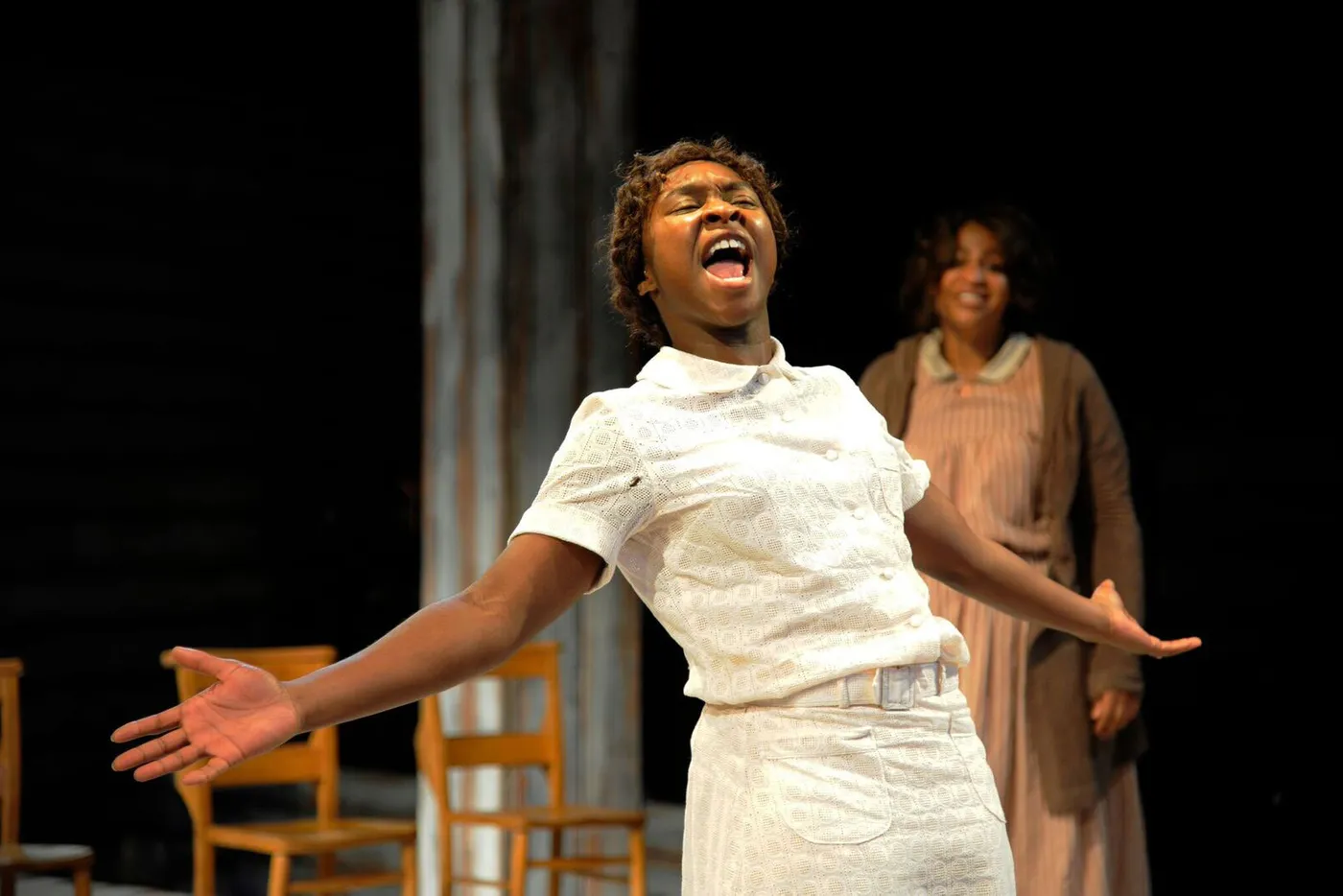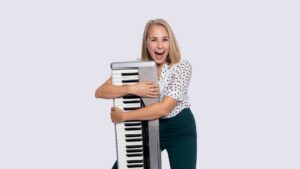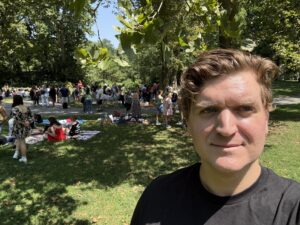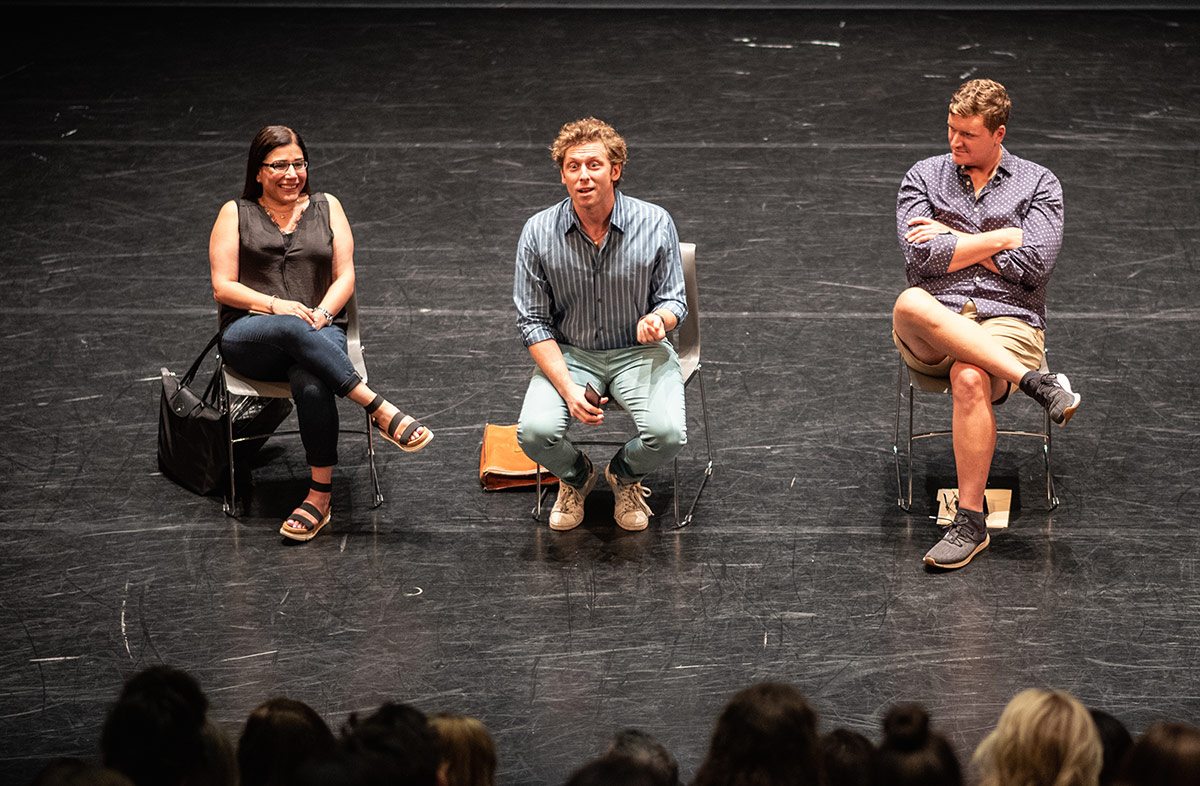Did you know your vocal folds are the length and width of the end section of your pinkie finger? Two tiny flaps of skin expected to make all of the vocal magic happen. That seems unfair!
When voice teachers talk about “supporting your sound,” they mean recruiting larger muscle groups to aid in sound production, aka don’t just leave those small flaps to do all of the heavy lifting! Using your auxiliary breathing muscles, the large muscle that surround your lungs/rib cage, is not only beneficial but also necessary to prevent vocal injuries in high powered singing. Adding in your glutes, your lats, your hammies and/or your core too will allow for a more supportive and bigger sound. Who doesn’t want that?!
“When voice teachers talk about ‘supporting your sound,’ they mean recruiting larger muscle groups to aid in sound production”
Watch this clip of Cynthia Erivo singing “I’m Here” on the 2016 Tony’s. Notice the physical gestures she does to help her support the different sounds she’s making (walking, squatting, marching, raising a leg, dropping her heels, lateral raises, chest fly, arm extensions aka reaching, and even head nodding/shaking). All of those movements help her produce the sounds she’s creating in a healthy, sustainable way that she can repeat 8x a week.
Not only do these physical gestures aid in producing a freer sound, they also add to her performance. We interpret her movements as emotional expressions. We see her really investing in the storytelling and the emotional arc of her piece by watching her body move. We think, “Wow. She’s GIVING IT! She’s fully invested in what her character wants in this moment.” It’s not weird when you see her body move, right? It doesn’t detract from her performance; in fact, it accentuates it. I believe her more and want to see her get what she’s after because of how committed she is physically, vocally, AND emotionally. It’s a powerful trifecta.
“Not only do these physical gestures aid in producing a freer sound, they also add to her performance.”
It looks and feels weird when people sing in “color” yet act in “black and white”. Aka belt their faces off while standing completely still. And it makes no sense! Characters don’t belt because their day is “meh”. Characters belt because they are in ecstasy or agony and need to express themselves fully. In other words, songs that require big sounds are songs that have big emotions. It’s a disconnect when a singer stands there casually while singing “Let It Go” when I know that within the context of the show, Elsa is feeling energized in finally releasing all of her pent up power, is finally accepting herself for who she is after years of shame, all while creating an ice castle from scratch. Each of those actions would require some significant physical effort to get through, so it makes sense to me that a singer choosing to perform that song would have to be engaging their body in the storytelling in order for it to ring true. If they’re just standing there, singing, the story doesn’t track, and the belt will also sound pushed, pressed, and tired.
Consider using your whole body, especially your back chain muscle groups, the next time you have a big sing!
If you’re practicing and feel like it gets hard to produce the sounds you want, pause, and ask yourself how much your body is helping you. Was it 100% supportive or 0%? Go back and try your piece while squatting, doing lunges, knee raises, wall sits, raising your arms (chest fly, rows, lat pulldowns), rotating your rotator cuffs, doing calf raises, walking backwards, etc. and see what magic you discover and see what you notice!

Jenna Pastuszek is a bicoastal actor, singer, voiceover artist, educator, and voice teacher. Theatre credits include the North American premiere of Elvis: A Musical Revolution (U.S. National Tour), Diner and Because of Winn Dixie (pre-Broadway runs), 44: The Unofficial Obama Musical (Center Theatre Group, Los Angeles), and It’s All Your Fault, Tyler Price (The Hudson Theatre, Los Angeles). Off and Off-Off-Broadway credits include various roles in New York City venues. She has sung the National Anthem at major events across the U.S., including for Major League Baseball.
Jenna is the creator, producer, and star of the solo shows GET HAPPY! An Evening Celebrating the World’s Greatest Entertainer, Judy Garland and ME, MYSELF & BARBRA, which have been performed at venues including Paper Mill Playhouse (Millburn, NJ), Bucks County Playhouse (New Hope, PA), Westport Country Playhouse (Westport, CT), The Overture Center (Madison, WI), and The Yale Club (New York, NY).
As a voiceover artist, she is a member of the Pandora Radio roster and has voiced national campaigns for brands including Starbucks, Pepsi, Amazon Alexa, KIND Bar, Target, IKEA, and Crest.
Jenna is Co-Founder of Innovative Voice Studio, where she trains performers appearing in &Juliet, Hamilton, The Phantom of the Opera, Chicago, Hadestown, Wicked, Ain’t Too Proud, SIX, Fiddler on the Roof, Hello, Dolly!, West Side Story, and more. She has held teaching positions at USC, NYU, The American Academy of Dramatic Arts, UArts, and Oakland University.




